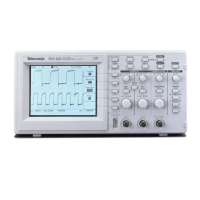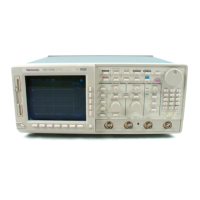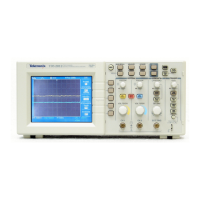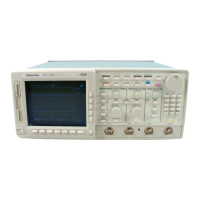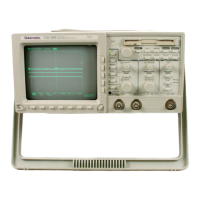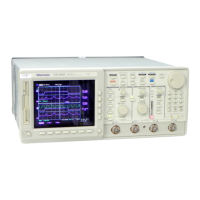TDS 420A, TDS 430A, TDS 460A & TDS 510A User Manual
3–115
Signal Path Compensation
Signal Path Compensation (SPC) minimizes electrical offsets in the vertical,
horizontal, and trigger amplifiers caused by changes in ambient temperature and
component aging. This allows you to make accurate measurements over a wide
ambient temperature range.
Run an SPC anytime you wish to ensure that the measurements you make are
made with the most accuracy possible. You should also run an SPC if the
temperature has changed more than 5C since the last SPC was performed.
NOTE. When making measurements at volts/division settings less than or equal to
5 mV, you must run SPC at least once per week. Failure to do so may result in
the oscilloscope not meeting warranted performance levels at those volts/div
settings.
To run an SPC, do the following steps:
1. Power on the digitizing oscilloscope and allow a 20-minute warm up.
2. Disconnect all input signals.
STOP. If you interrupt (or lose) power to the instrument while signal-path
compensation is running, a message is stored in the oscilloscope error log. If
such a case occurs, rerun signal-path compensation. (The error message remains
in the error log until cleared using special service software.)
3. Press SHIFT UTILITY
➞ System (main) ➞ Cal (pop-up) ➞ Signal
Path
(main) ➞ OK Compensate Signal Paths (side).
4. Wait for signal path compensation to complete (one to three minutes). While
it progresses, a “clock” icon (shown at left) is displayed on-screen. When
compensation completes, the status message is updated to Pass or Fail.
5. Verify the word Pass appears under Signal Path in the main menu. (See
Figure 3–61.)
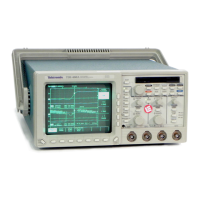
